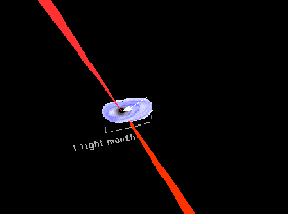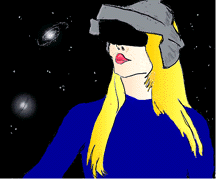Click on image for full size
Courtesy of NASA
NASA Reveals Two New Missions
News story originally written on October 28, 1999
NASA has just revealed its newest missions, Swift and FAME. These two projects are part of MIDEX, NASA's medium class explorer program. The agency had to choose from over 31 proposals, which was very difficult for the judges.
The Swift Gamma Ray Burst Explorer will be launched in 2003. The spacecraft will contain three telescopes that will study gamma ray bursts. Swift will be able to rotate in space and point its gamma ray, X-ray or ultraviolet and optical telescope at a burst. Gamma bursts come from the far edges of the Universe, so scientists can study these areas. The project plans to run for three years. Some of the time will be used to search for black holes and other cosmic ray sources.
The Full-sky Astrometric Mapping Explorer (FAME) will study millions of stars, beginning in 2004. FAME will obtain brightness and position data with much precision. The project is scheduled to run for five years.
"MIDEX missions not only return first-class science results, they continue NASA's trend toward greatly lowered mission costs via innovative mission planning and operations," Weiler added.
The first two MIDEX missions are IMAGE and MAP, both chosen in 1996. IMAGE will be launched in 2000 to study the magnetosphere and solar wind, while MAP will begin measuring the cosmic ray background radiation in November of 2000.















